Scientist makes Mars-like rocks in search for life
March 13, 2017
Meghan Murphy
907-474-7541
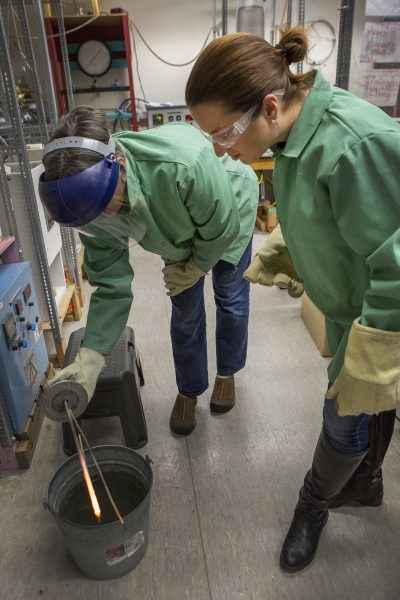
Download text and photo captions here.
If only the Martians had a TripAdvisor noting their five-star hangouts on the red, dusty planet.
The review titles might read, “Water are you waiting for?”, “Feel the burn” and “Acid washing — it’s not just for jeans.”
The ensuing directions to places would have made it easier, although less interesting, for Sarah Black to help scientists in their search for evidence of past life on Mars. She recently came to the University of Alaska Fairbanks to create Martian rocks, and is now back in Colorado destroying them.
No, it’s not out of frustration.
The doctoral student at the University of Colorado Boulder is conducting an experiment that will help scientists determine if suspected hot spots for potential life on Mars were truly once hot spots.
“We know that hydrothermal systems here on Earth can host these really thriving microbial communities,” Black said. “So a really good place for us to look for potential signs of life on Mars are places where we think hydrothermal systems existed.”
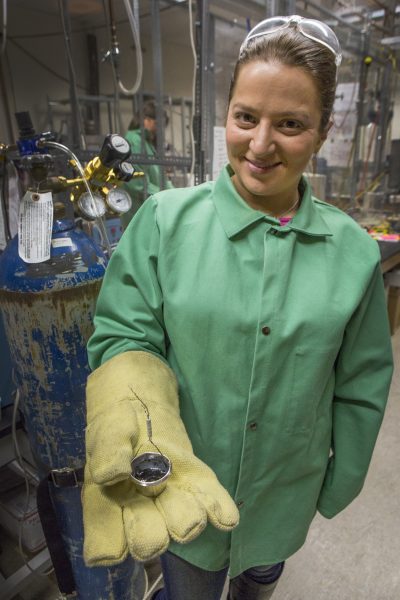
These systems form when water seeps through oceanic or continental crust to where the magma lies underneath. The magma superheats the water, and sometimes highly acidic volcanic gases mix in. Then pressure mounts until the hot, acidic water spews forth from the crust and erodes the surrounding volcanic rock.
Although hydrothermal systems no longer exist on Mars, scientists are searching for the clues left behind from the erosion.
But scientists are basing their search on what they know about volcanic rocks on Earth, not Mars, said Black. Mars rocks have a lot more iron in them, which colors the planet red. They could also leave behind a different pattern of minerals than their Earthly counterparts.
So Black’s experiment will simulate the erosion in a lab but will use synthetic Mars rocks instead of those available on our home planet.
To make the rocks, Black traveled to a lab that had just what she needed: a furnace that heats up to 2,400 F. The Geophysical Institute’s Experimental Petrology Lab at UAF uses the furnace to create volcanic rocks for scientific experiments.
“The lab has a pretty extensive amount of equipment, high-temperature furnaces, and all of these pressurizing pumps, pressure lines and valves,” said UAF geosciences Professor Jessica Larsen, who runs the lab. “There are fewer than 10 labs like this at universities across the nation.”
Black mixed the same chemicals in the same ratios as found in volcanic Mars rocks. She made several batches of synthetic molten lava in the furnace, which she then cooled into rocks. They are now at her university, where she will place them in hot, acidic water to see what minerals are left behind.

If the leftovers resemble what scientists have already been searching for, then it’s a thumbs up that they’re on the right track. If not, then Black’s findings can provide better clues to search for – ones that might ultimately lead to microbial Martians or signs that they existed.
Hydro and extremo — an ET combo?
Inhospitable to humans, hydrothermal systems provide an all-inclusive spa for microbes called extremophiles. They thrive in conditions that would kill most other life forms on Earth.
Life’s early pioneers may have emerged in these systems, which today include hydrothermal vents in the ocean floor and the Grand Prismatic Spring at Yellowstone National Park.
Before Mars cooled, it had magma, water, volcanoes and, most likely, plumes of scorching, acidic water spouting from fissures in the planet’s crust. Meteorites hit the planet’s surface, generating more heat and creating more lava.
It stands to reason that microbial Martians may have once existed in the planet’s hydrothermal systems, if they are not still there today.
While Black doesn’t know if she’ll see extraterrestrial life in her lifetime, she said she’s happy to help with a quest that seems an undeniable part of human nature.
“We are explorers, and it’s our natural inclination to want to understand more about the origin of life,” she said. “And one place where we can look for things to help further our understanding about the origin of life is Mars.”
For updates on Sarah Black’s findings, go to sarahrblack.com.
Sarah Black's illustrated experiment
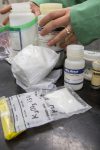
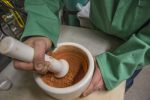
Step 1: Mix the exact types of minerals (all in powder form) in the exact ratios as they are found in volcanic Mars rocks. This means adding a lot more red dust – or iron – to the mix.
Step 2: Pour the mixed powder into a crucible, a tiny metal cup, and place in a furnace that can reach more than 2,400 degrees Fahrenheit. This turns the powder into synthetic Mars molten lava.
Step 3: Take the crucible out and “quench” it, which means plunging it in water. This cools the lava and turns it into rock.
Step 4: Place the Mars rocks in scorching hot acidic waters that simulate a hydrothermal system.
Step 5: Analyze the composition of minerals left behind and compare them to the composition of minerals left behind by Earth’s hydrothermal systems.
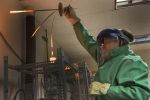

Step 6: Either confirm that scientists are looking on Mars in the right places for where hydrothermal systems once existed or help steer them in the right direction.
Step 7: Go curling, because your advisor who visited UAF — Brian Hynek — went to the Fairbanks Curling Club, loved it and introduced it to his lab group, which named their curling team The Space Cats.


